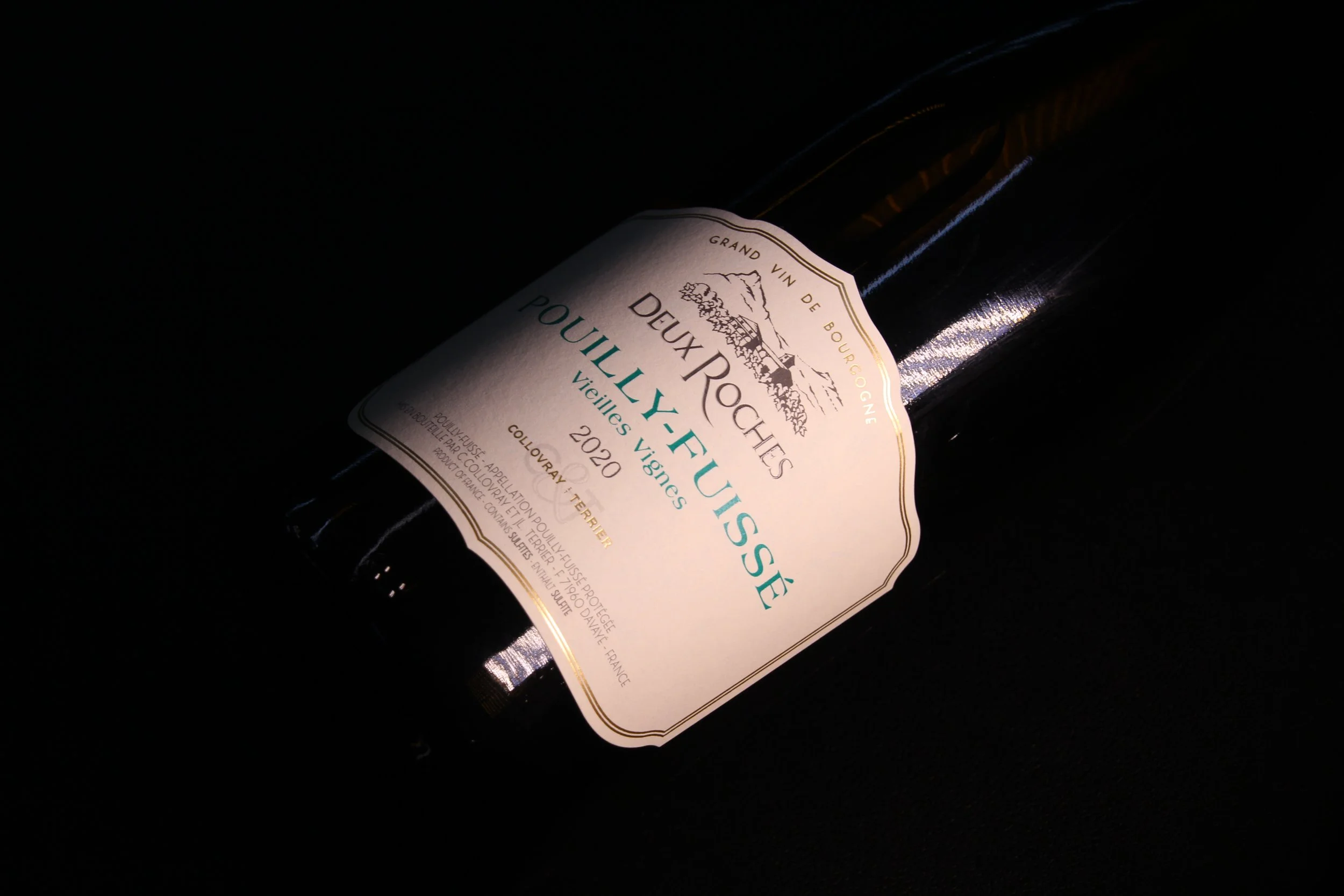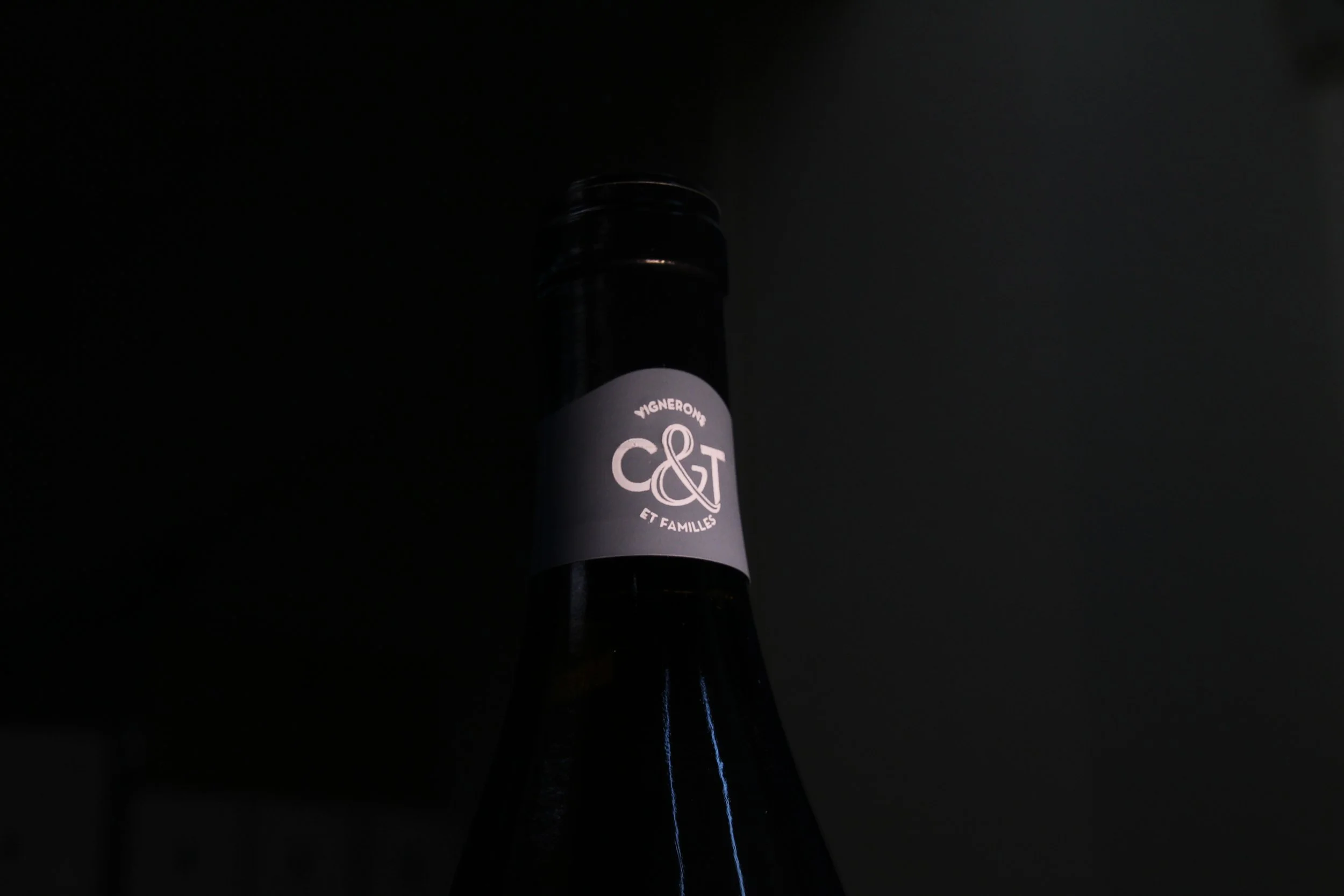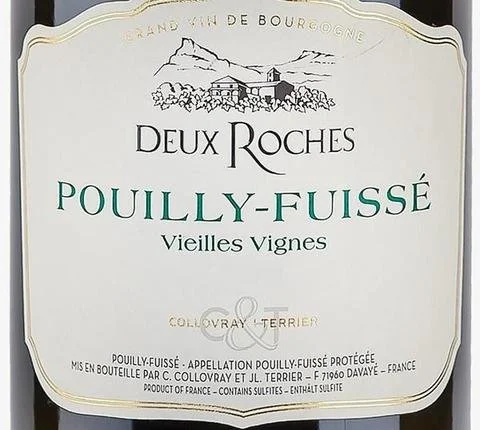
By Wine Type
Deux Roches Vieilles Vignes 2020 Puilly Fuisse
Deux Roches Vieilles Vignes 2020 Puilly Fuisse
Appellation: Pouilly Fuisse, Bourgogne
Vineyard: Sustainable farming. The vineyard is highly committed to environment and therefore has earned the “Haute Valeur Environnementel Level 3” Certification since 2017 ( HVE ). It is on the process to converting to organic farming.
Grape: Chardonnay
Yield: 55 hl/ha
Bottles produced: 20,000 btl
Packing: case of 6 bottles in case
Ageing & other info: Vines are over 50 years old ( Vieilles Vignes ). The vines are planted mainly on limestone clay hillsides near the Rocks of Solutre and Vergisson ( both are Classical Natural Sites of France ), and also at Chaintre and Fuisse. Fermentation takes place in exclusive barrels (20% in demi-muid of 600 litres, less than 10% in new oak). Malo-lactic fermentation is carried out depending on vintage. The wine is then aged on the fine lees until spring. SO2 is limited as least as possible during the production.
Recognition & Rating: NA.
Maturity/ Drink: Best in 3-6+ years
From the vineyard:
With their agricultural roots, Collovray et Terrier knows that everything begins in the vines. Working the soil and respect for the vegetation are the prerequisites for a healthy, ripe, good quality crop. It is the beginning of a process that continues through harvest, carried out at the optimum moment, then into the vats and the cellar, right up to the bottling of the wine.
Having perfection as the objective means mastering each step, and considering the impact of every single gesture. Care and method are the basics, and it is also necessary to adapt to the year’s weather conditions, observe, verify each parcel, and know how to evolve and experiment. For example, they have engaged the services of a geologist in the vines to better understand the potential of our different soils and adapt our work accordingly, both in the vineyard and the cellar.
This commitment has earned them the High Environmental Certification since 2017. This state awarded accreditation is given in recognition of the actions undertaken by agricultural businesses in favour of the environment.
In the vines: observation and action
The vineyard monitor the fauna and flora attentively, according to a precise protocol:
observation and counting of pest populations using traps, to estimate the level of threat
observation of natural pest predators (arrival date and population of auxiliary fauna),
study of the life in the soil to garner information about its structure, texture, and biological functioning.
Analysis of this data enables them to anticipate disease and minimise inputs.
The vineyard management techniques and processes are natural, including the use of biocontrol products which stimulate the plants’ own natural defences. These are some of the methods they use:
grassing over around and between the rows to limit erosion and facilitate the penetration of rainwater into the earth,
reasoned fertilization using organic matter (manure…),
readjustment of pH levels and the use of demineralized water to increase the efficiency of mixtures, enabling the doses to be reduced (up to four times less than the authorised dose).
permanent regulation of the sprayer for improved performance,
use of prophylactic measures to prevent the propagation of disease: efficient trellising, de-suckering, disbudding, leaf thinning, etc.
hedge planting to encourage biodiversity that reinforces the vines’ natural defences and helps to limit erosion.
Other products are used only when the risk of disease is too great and threatens the quality of our crop, or during flowering, which is a moment of great vulnerability for the vines.
Tasting Notes:
“ This is a classic Bourgogne white with very excellent concentration and layers of lime, plus tropical fruit. Special taste of honeysuckle and ripe apricot are founded, and is wrapped in a decent, impressive long finish. Nice oak, luscious palate, simply a sensational white to enjoy! ”
Things you should know :
All the vines were grouped around the two Rocks of Vergisson and Solutré ( prehistoric limestone escarpment which are iconic site in the department of Saone-et-Loire, protected by the French law on sites naturels classés and currently at the heart of a grand site national operation ), which are part of the unique geological heritage of the southern Mâconnais, with their vestiges of prehistoric human activity.


